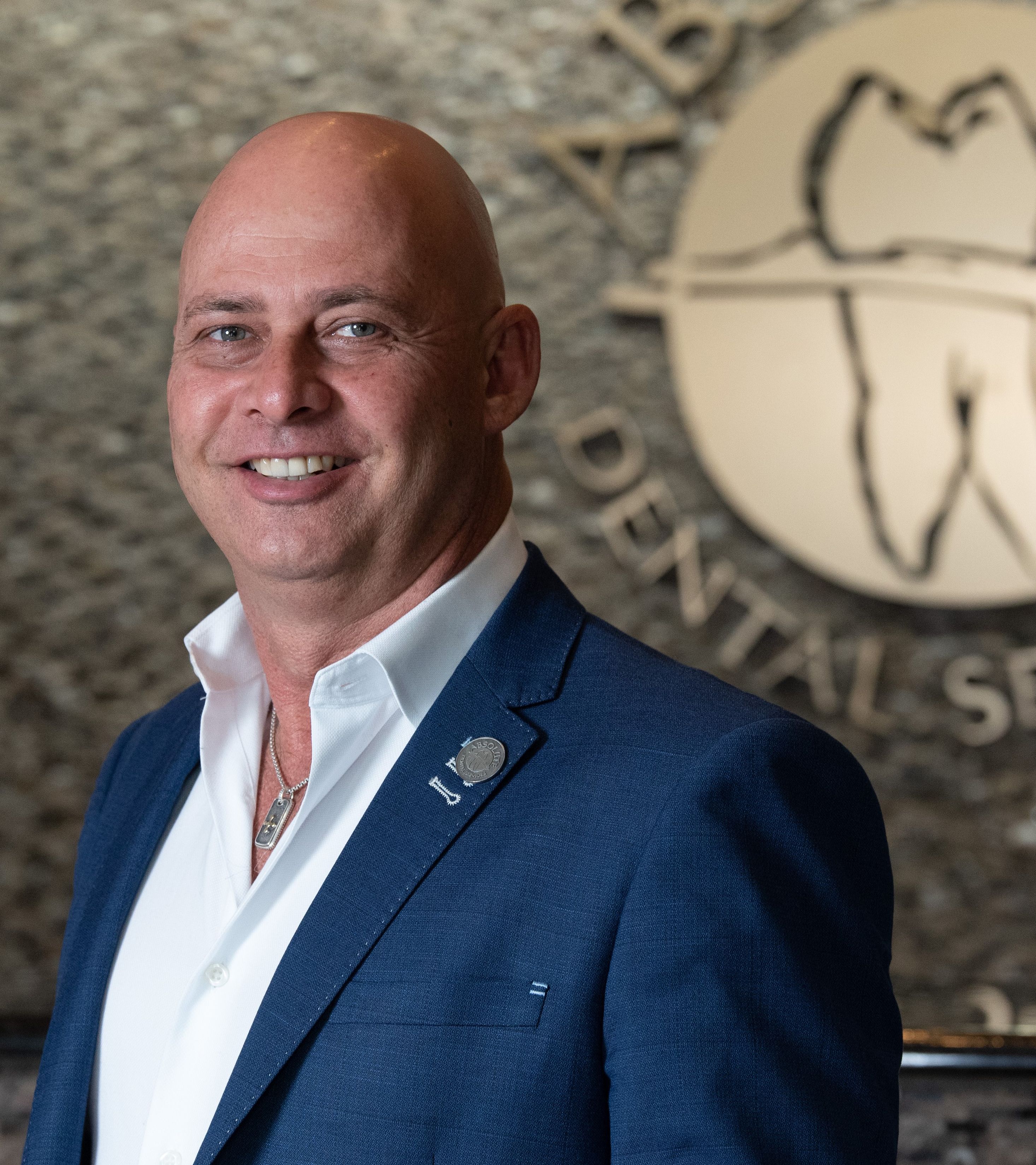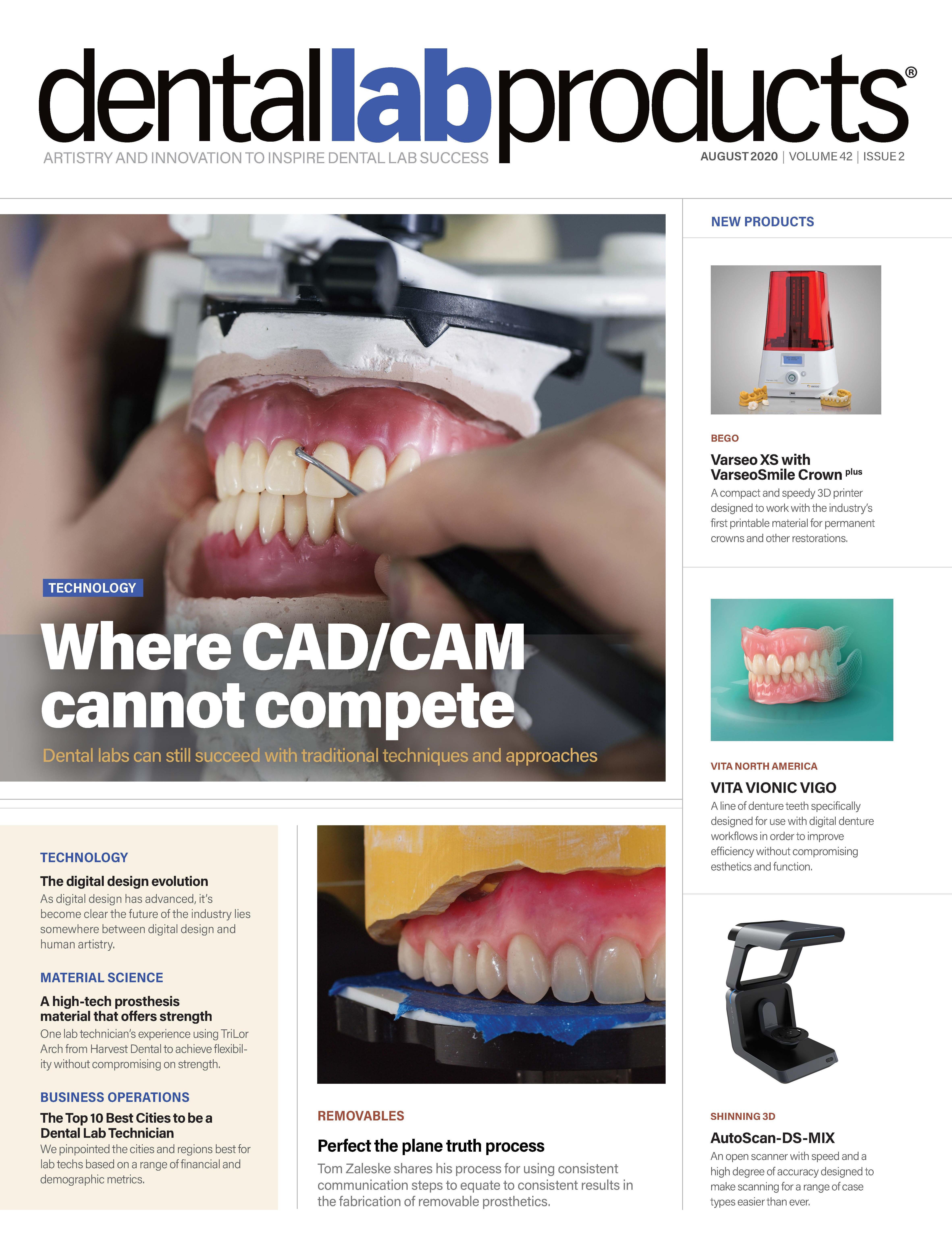How to balance digital and analog design
As digital design has advanced, it’s become clear that the future of the industry lies somewhere between digital design and human artistry.
Conrad Rensburg, N.D. & N.H.D. in tech.

Most technicians, trained in the 1990s and before, fully understand the design freedom that a wax-knife, a Bunsen burner, and a block of wax offered. This was a world where a talented artist—with a firm understanding of function, anatomy, esthetics, and a willingness to work long hours—easily ruled the universe.
Unfortunately, this “analog freedom” of creating almost anything imaginable was rather short-lived and was quickly replaced by a digital mouse and a computer screen. This digital evolution was ultimately for the better, and through this process, a new breed of super-efficient technicians was spawned. This 21st-century technician can create amazing prosthetics with this technology while preserving the most valuable asset off all—artistic hands.
Over the last decade we have seen the creation, and subsequent development of many digital design programs, such as 3Shape dental system (3Shape.com), exocad (exocad.com), CEREC inLab (dentsplysirona.com), etc.
At first, most of these softwares focused on fixed restorative processes required to support the multitude of new milling systems and innovative zirconia products on the market. With the introduction of printable and millable denture bases, these software companies quickly stepped up to also supply the industry with a workable denture and partial design module.
3Shape, under the leadership of visionaries such as Rune Fisker, offered a denture module for laboratories as early as 2010. This was long before the industry had the analog ability to produce a functional and esthetic digitally processed denture that was comparable with a hand processed prosthesis.
STL Flexibility
As laboratory owners and technicians wanting to compete in this ever-changing digital landscape, it is crucial to not only stay abreast of these technologies but more importantly, understand what mastering its capabilities offers.
In the past, layering glass ceramics, casting alloy substructures, and grasping other hand processes defined a laboratory. Going forward, the ability to manipulate and control the STL file will be the differentiator.
Artistry will never be replaced by machines, but hand processes remain the biggest potential enemy of consistency. A marriage between digital design and human artistry is ultimately the future of this industry.
Up to this point in our evolution, labs have had no choice but to be prosthetic producers guided by manufacturers. A technician’s responsibility in the past was mastering the processing of materials driven by suppliers. STL is now allowing technicians to be leaders and innovators, using these materials to support their innovations and through this, differentiate their laboratories from the competition.
The Merging of Fixed and Removable
Many dental laboratories established in the 1990s and before were founded as specialized businesses focusing on either fixed or removable prosthetics. With the introduction of the all-on-four™ concept by Nobel Biocare, the once clearly defined lines differentiating fixed from removable laboratories became blurred. As this concept grew in popularity, many fixed labs found themselves in a situation where a traditional denture wax set-up was required to initiate the process of restoring a fixed hybrid prosthesis.
Absolute Dental Lab faced this same conundrum. Ultimately, the decision, albeit hesitantly, was made to morph into a full services lab.
For almost a decade the Absolute removable division was seen purely as a support department for the fixed aspect, and therefore was never promoted, advertised, or ever considered as a profitable business opportunity.
All the above drastically changed when Dentsply Sirona, in partnership with Carbon 3D printing, launched the new Lucitone 3D Print™ material. This material/technology combination greatly increased production efficiency and yielded high-end esthetics combined with material strength never achievable in a printable prosthesis (Fig. 1). This material advancement greatly improved profitability and breathed a breath of fresh air into this once almost forgotten department.
Unfortunately, the corporate Lucitone message was that the technology could only be used for full dentures and offered no initial application for removable partials. As more clinicians became aware of the incomparable strength of this material, the lab received calls on a constant basis requesting a Lucitone 3D printed partial.
The Challenge
Create a partial in a full digital workflow (Fig. 2), print the base with Lucitone 3D Print on a Carbon M2 printer and lute/fuse the IPN 3D™ Portrait teeth using Dentsply Sirona’s proprietary Lucitone Digital Fuse. Creating this partial, with a custom milled tooth structure in the design software, is as simple as point and click. The goal with this project was to process only with available Dentsply approved components found inside the Lucitone 3D print family. Unfortunately, using the proprietary prefabricated IPN 3D teeth posed a real digital challenge.
The STL Problem
No proprietary Dentsply Sirona supported partial design workflow exists in the 3Shape RPD design module. At the time of this publication, the 3Shape RPD module did not have premanufactured tooth libraries available. Even though the IPN 3D DME library exists in the 3Shape denture module the RPD design module relies on traditional custom crown and bridge tooth designs that can be exported for milling of the tooth overlays.
The Solution
The 3Shape RPD module offers a customizable tooth library option through the “scan it library” function. This allows a laboratory the ability to create their own custom tooth library in lieu of using the 3Shape default libraries for their crown design.
This option gave the Absolute team the ability to create an RPD workaround by physically scanning the IPN 3D teeth on a 3Shape E2 benchtop scanner (Fig. 3). This effectively created an IPN 3D DME library (Fig. 4).
Although initially necessary to scan every mold in the IPN 3D range to build the library, this arduous task is only required once. Furthermore, it is only necessary to scan one quadrant of each tooth card. The “scan it” function has a “mirror current tooth” option which offers the ability to automatically set the contralateral tooth from the DME file.
It is important to note that if interproximal or clearance adjustments are needed, the value of using prefabricated teeth in lieu of a custom designed and milled option becomes questionable.
Because of the aforementioned, 3Shape had no practical reason to offer prefabricated tooth libraries in the RPD module and this should therefore not be seen as a deficiency in the software.
The flexibility of the RPD design module does, however, allow the designer to infringe in the interproximal contact areas if an optimal DME tooth is not available (Fig. 5). In this case, those infringements caused over-designed contact areas which had to be adjusted in analog on the printed model.
The advantage that milling a tooth structure offers over printing a base, for luting prefabricated teeth, is the fact that the tooth structures can be customized in the digital design. Those custom designs are milled on spec in the analog fabrication process. The flip side is that milling a tooth structure and denture base, even utilizing the most advanced milling equipment compared to printing the denture base, is simply not efficient or cost-effective in a modern-day production laboratory setting.
To complete an encompassing workflow available for use in all clinical scenarios, the Lucitone Digital print product family requires the addition of millable tooth puck. This addition would also allow the use of this superb product when a custom designed tooth is a requirement.
In Summary
Even though a Lucitone printed partial base is 3 times stronger (3000+ J/m2) than the minimum required ISO impact standard (900 J/m2) and more than twice as strong as the well-proven traditional Lucitone 199 (1380 J/m2), the demand for permanent acrylic partials have all but disappeared.
This digital revolution in the dental industry is only now starting to gather steam, and over the next decade, these technologies will grow exponentially in both functionality as well as demand.
The rationale behind this article was not to revitalize interest in acrylic flippers.
Laboratory owners and technicians need to realize that times have already changed. Digital design is the future. Understanding the hidden ability of this new “wax knife” will lead to innovation and innovation will ultimately lead to relevancy.
Acknowledgments: The author would like to recognize Dries van Aarde, Kate Johnson, and Steve Lombardi for their thorough understanding and ability to manipulate the 3Shape design software. Also, ART team members Jack Marrano and Chris Love for their amazing artistry.
